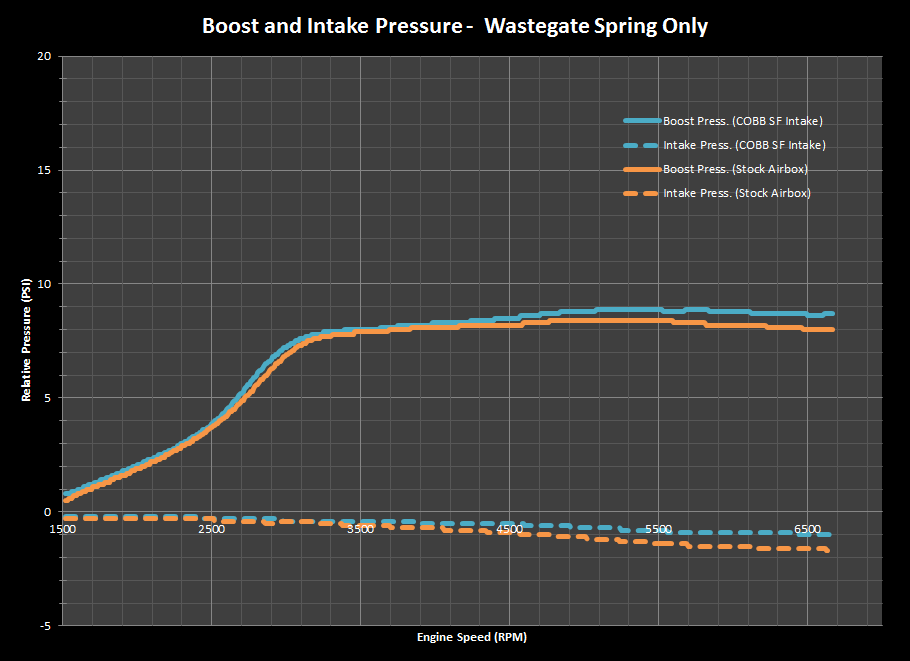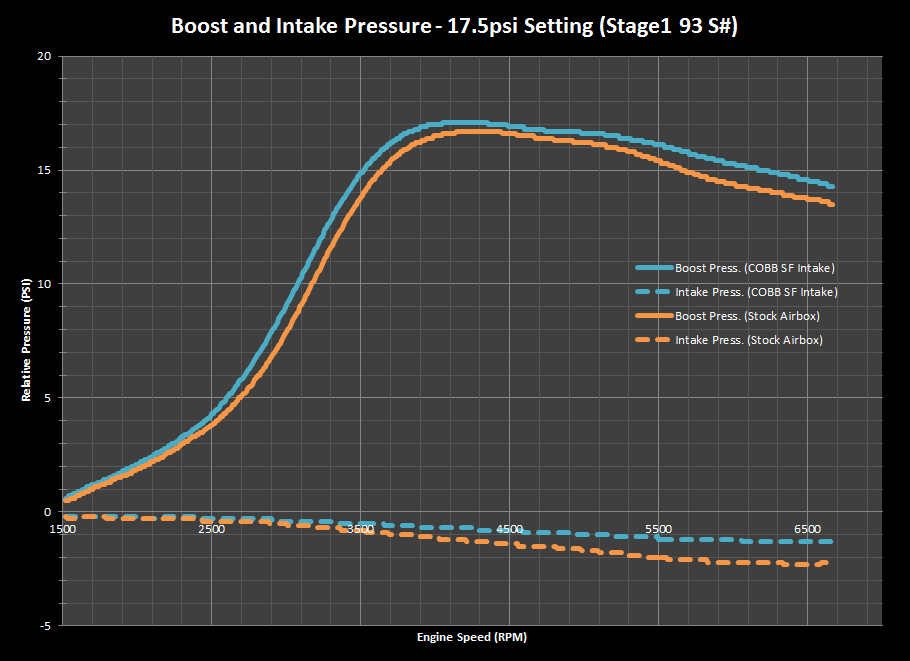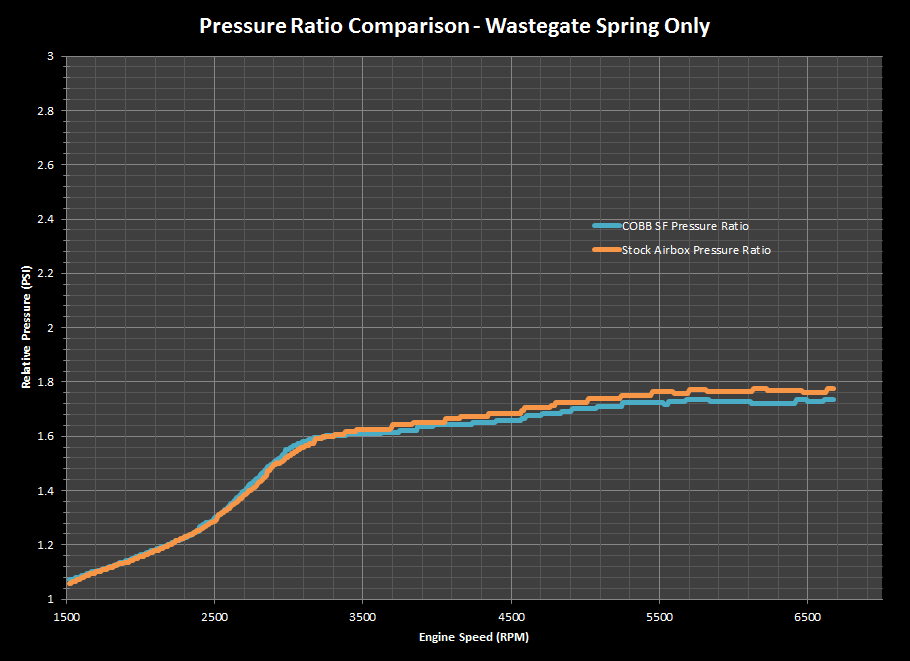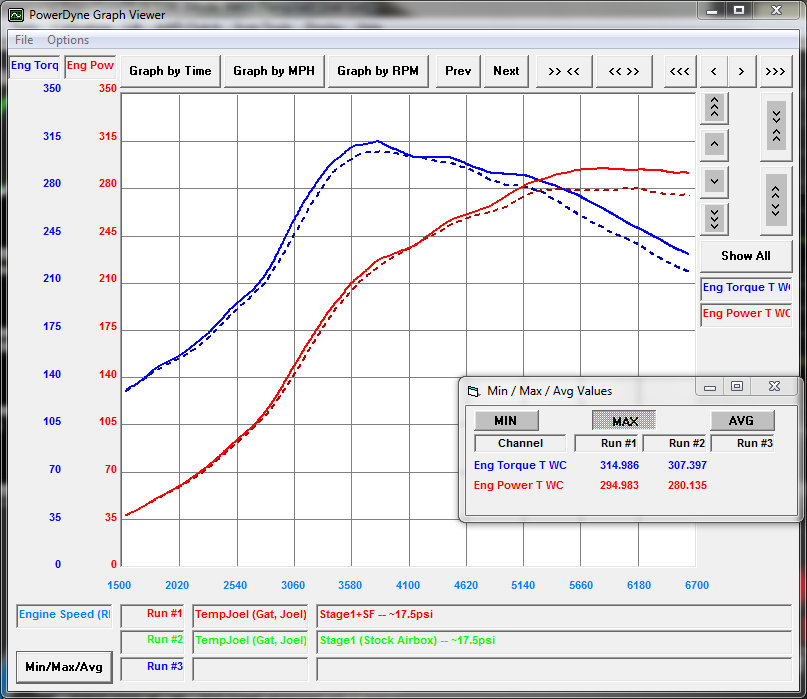2015+ STI Stage1+Intake Testing
COBB SF Intake testing
Applicable Vehicle:
- 2015 - 2018 STI
So, you've probably seen some pretty cool early results from hardware swaps on the 2015 STI platform. But, have you seen any actual data besides some basic dyno charts with really high smoothing? Probably not Lucky for you, we're here to provide actual quantified data behind the madness.
Many people were initially disappointed that our first release only included Stage1 maps. This was because we prefer to *thoroughly* test parts to find out what each modification will do so that we can be sure our Staged Package offerings have a definitive gain for your investment. For example, here is some of the testing we did to compare power output when a downpipe is added to the car:
http://forums.nasioc.com/forums/showthread.php?t=2639122
For intakes, we decided that looking at only power wasn't good enough. An age-old claim in Subaru world is that the factory airbox is not restrictive with the stock turbo, and we wanted to see it for ourselves. We put this to the test by measuring turbo inlet vacuum generated on the stock airbox and with a COBB Tuning SF Intake system fitted to the car. Garrett refers to vacuum in the turbo inlet as "depression": "Any restriction (caused by the air filter or restrictive ducting) will result in a “depression,” or pressure loss, upstream of the compressor that needs to be accounted for when determining pressure ratio."
http://www.turbobygarrett.com/turbobygarrett/pressure_ratio
By comparing the depression created by the factory intake against an upgraded intake, we can actually "see" if we have removed a restriction or not. If the depression is the same, well, all we've done is added a noise-maker to the car
To complete this test, we first gathered boost and depression data on the stock airbox using a stock-hardware 2015 STI (tuning only), first on wastegate boost pressures only, then at ~17.5psi peak via our Stage1 93 OTS map in "S#" mode. Next, we gathered the same data on the COBB SF Intake, with no calibration changes other than for the different MAF curve required.
What did we find? Results! The stock airbox creates depression levels of a bit over 1psi on wastegate boost at redline, and well over 2psi on the Stage1 boost levels! What does this mean? Here in Austin, where the elevation is ~800 ft, the barometer was ~14.21psi for the testing day. With the stock airbox at redline, the turbo was only being fed with approximately 12psi of pressure due to the depression. For comparison, this would be the same as running the car at 5500 ft of elevation if there were no depression!
Here is the boost and depression (intake pressure) data for wastegate and for 17.5psi, shown in gauge pressure relative to ambient atmosphere:
As you can see, thanks to the reduction in depression with the upgraded intake, boost is a bit higher on the wastegate. At 17.5psi, we can see that spool has improved and high RPM boost is held out better on the same WGDC settings. In each case, the depression created by the COBB SF Intake system is roughly half of the factory airbox. What does this mean? Simply put, we've reduced restriction in the turbo's inlet path, as shown by the reduction in depression.
I also decided to take this data one step further, which is to calculate the turbocharger's effective pressure ratio for each case. One caveat is that we're looking at post-IC pressures, not pre-IC, but because the intercooler has not changed at all between tests, it shouldn't skew the results too greatly.
Here is the pressure ratio for each scenario (again, baro in Austin was ~14.21psi on testing day), calculated using Garrett's methodology here:
http://www.turbobygarrett.com/turbobygarrett/pressure_ratio
On wastegate boost pressures, we can see that there isn't too drastic of a difference -- perhaps a tenth of a point at very most. However, at 17.5psi, we can see the COBB SF Intake really start to separate itself: pressure ratio is decreased by about two full tenths across the board after spool. What does this mean? The turbocharger compressor is now operating more efficiently, at least in terms of the demanded pressure output (boost) again the amount of pressure available at the input.
So, at the end of the day, here's what power looks like between the two. COBB SF Intake are the solid lines, stock airbox are the dashed lines:
Long story short? On the 2015 STI, even in otherwise-stock configuration, the COBB SF Intake system (and others that have the same or better airflow capabilities) help the turbo breather easier and in turn, make the same boost more efficiently or more boost at the same efficiency when compared to the stock airbox.
Thanks for reading along! Hopefully you found this data interesting and helpful. We plan to keep providing results like this as we dig in further on the 2015 STI and WRX, so stay tuned
Cheers,
Lance
Related Links
Customer Support
Phone support available 9am to 6pm Monday-Friday (CST)
866.922.3059
Copyright 2023 © COBB Tuning Products LLC. All Rights Reserved. | www.cobbtuning.com




